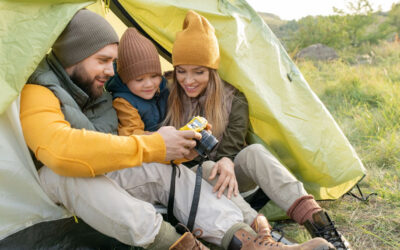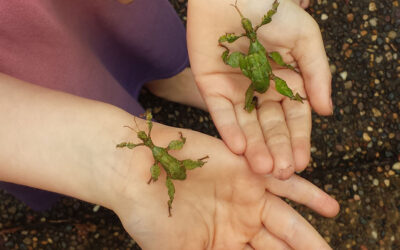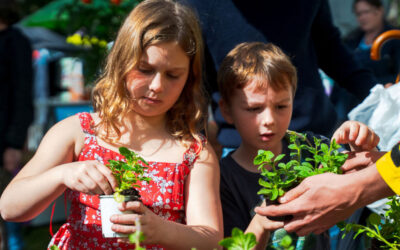We all want our kids to be fit and active, but swimming is more than just another activity to fit into a busy week. Teaching adequate swimming skills is a matter of life and death, making swimming the most important activity for kids to undertake.
Want to hear some scary stats? On average, 10 children under the age of five drown in Queensland each year, and an average of five children aged 5–17 drown each year. Between July 2004 and June 2017, there were tragically 192 drowning deaths of children aged between 0 and 17 years. As well as drownings, every year hundreds of Australian children aged 0–4 experience a non-fatal drowning (often called a near-drowning). According to the Samuel Morris Foundation (samuelmorrisfoundation.org.au), 22.5 per cent of those admitted to hospital following a non-fatal drowning will suffer a hypoxic injury due to lack of oxygen that will result in disabilities for life.
“Learning to swim is a life skill,” says John Bladon, Head Coach and Aquatic Centre Manager at St Andrew’s Anglican College. “Children that can swim are 70–80 per cent less likely to drown.”
To bring this essential life skill to the school and wider community, St Andrew’s Anglican College is opening a state-of-the-art Aquatic Centre at their growing campus at Peregian Springs. “We have a FINA accredited 50-metre, 10-lane pool with a moveable divider to create two 25-metre pools,” explains John, “and we also have a purpose-built 15-metre x 8-metre learn to swim pool.”
Offering learn to swim classes, squad, fitness classes and a café, the Aquatic Centre will be open to the wider community as well as St Andrew’s families.
“The new Aquatic Centre is an incredible addition to campus for our students, but we wanted this facility to be open to the wider community, ensuring all families in the area have access to high quality learn to swim programs,” says John. “The centre will be a great asset to the community for decades to come.”
Classes offered include learn to swim from three months through school age, as well as adult classes. “Our Parent & Baby classes, for children from 3 to 36 months, are free for 3–6- month olds, and we will also offer free water safety information classes to parents and CPR training every term,” says John.
Just keep swimming
As well as getting babies in the pool early, it’s critical to keep kids in swimming lessons until they have learned all the necessary skills. A 2018 report by The Royal Life Saving Society Australia found that three out of four children had quit swimming classes by age eight, long before they’d learned skills that could save their lives.
The Royal Lifesaving report also found:
- Only 25 per cent of children stayed in lessons long enough to reach national safety and swimming benchmarks at age nine and 10.
- 83 per cent of 12-year-old children couldn’t tread water for two minutes (the goal for children by the time they finish primary school).
- 40 per cent couldn’t swim 50 metres of freestyle or backstroke.
- One third couldn’t swim 25 metres of survival strokes.
Studies have shown that parents often overestimate their children’s swimming and safety abilities, with only 2 per cent of children aged 12 still doing swimming lessons.
“Not only do kids need to start swimming lessons early, they need to continue lessons throughout their Primary years,” says John. “It might get challenging, as schedules get busy and kids pick up other sporting pursuits, but living in such a beachside location, it’s a matter of life and death that our kids learn to swim to a high level.”
The Australian Water Safety Council’s aim is for 100 per cent of children being able to meet all the swim survival skills before leaving primary school.
Swimming and survival skills
- Entry and exit: A fall in entry and exit from deep water
- Sculling and body orientation: Body awareness skills
- Movement and swimming strokes: Swim continuously: 50 metres of strokes with recognised stroke technique must be used
- Survival and lifejacket skills: Swimming, sculling, floating in cloths for 3 minutes and learning to float with a flotation device and life jacket.
- Underwater skills: Searching and swimming underwater
- Rescue skills: Throwing rescues
- Water safety knowledge: Knowledge of the dangers in the aquatic environment
- Extension skills: Competitive stroke development
Safety at home
Even if children are attending regular swimming lessons, parents still need to be vigilant about water safety at home. Children need to be continuously and actively supervised by a capable supervisor when in or near water. The presence of other children or the use of flotation devices should not take the place of active adult supervision.
For children under the age of five, this means being within arm’s reach at all times. For children 6–10 years, constant active supervision is required, and the supervisor should be prepared to enter the water at any time. For children 11–16 years, supervisors should discourage risk-taking behaviour around water, and ensure teenagers learn survival and rescue skills*.
“Children need to be taught water safety and awareness,” says John. “This means, not only teaching children how to swim, but also educating children about the risks of water hazards and reinforcing rules about entering pool areas.”
As well as adequate supervision, remove toys from in and around the pool area to reduce the temptation for children to gain access to the pool, and have a safe play area for children away from pools or other water hazards. Having multiple barriers between children and a water hazard can also help prevent children from accessing water without the knowledge of an adult.
It’s not just swimming pools to be mindful of. Never leave children unsupervised in the bath, and be aware of children’s access to non-pool water hazards, particularly bath tubs, buckets of water, or other bodies of water.
“With adequate preventative measures in place in the home and access to regular learn to swim programs, together we can ensure that children’s lives are saved.”
For more on swimming, try How long should children take swimming lessons? and Why swim safety matters for every family.


